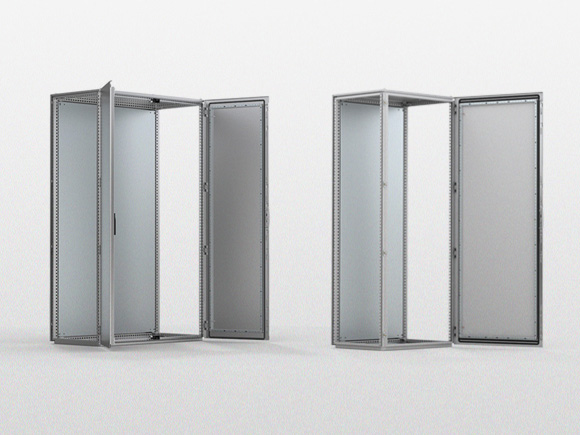ALL YOU NEED TO KNOW ABOUT MODULAR ENCLOSURES – The Modular Enclosure is a high-tech industrial enclosure that has been designed to safeguard equipment in non-hazardous interior areas. It features cutting-edge sealing technology, verified ingress protection ratings, and several equipment mounting options.
Electrical and electronic equipment in local area networking, telecommunications, and industrial applications is protected by a modular enclosure system. They make the enclosures simpler to use and quicker to populate while still being built to withstand the heavy loads and severe environments of industrial applications.
Patented three-dimensional modular enclosure methods for creating panel boards include DB Panels (Distribution Boards) and Elsteel Modular Enclosures. For a variety of reasons, it is the most often used modular enclosure.
Major Things About Modular Enclosures :
True Modular Enclosure :
A true modular enclosure is one that is made of parts or panels that can be rearranged or reconfigured within the confines of its standard design to provide special or customized solutions. It can also easily incorporate the use of “turn-key solutions,” which can lessen or do away with expensive fabrication and machining.
Speaking of modifications, another business phrase that is simple to conflate with modular enclosure is the acronym mod or mod enclosure, which typically refers to the modified enclosure. A customized enclosure is merely an enclosure with custom holes, tapping, milling, or other changes, and does not necessarily mean it has the qualities of a genuine modular design, even though it can have some modular traits or attributes. Tech Blog
Keeping enclosed electronics safe:
Yes, just with unibody enclosures, the capacity of a modular enclosure system to safeguard the delicate electronics housed inside may be their most important mission-critical feature. Modular enclosures, on the other hand, offer more strength and durability thanks to a creative steel frame design that helps counter a wider range of potential threats. Water, airborne contaminants, unlawful access into the closure, and a host of other environmental concerns are all easily cited by any facility management or systems integrator in any manufacturing facility. Constructions made of stainless, carbon, polycarbonate, or fiberglass offer NEMA and IP ratings comparable to those of unibody enclosures as well as the potential for further protection from UV deterioration, corrosion, and other factors.
Climate Control:
A successful industrial automation framework must be able to accurately, affordably, and efficiently direct targeted cooling to maintain optimal operating temperatures for peak performance and longer service life, and modular enclosures are designed for the seamless integration of digital climate control systems. Facilities managers can more accurately direct cooling outputs to where and when cooling is most needed thanks to compartmentalization, or the ability to house many pieces of equipment, each of which may have varied temperature control needs.
Modification Ease:
Modularly constructed enclosures also have the flexibility to be modified to exacting standards, which we touched on earlier. Custom solutions are required in the current manufacturing environment for particular conditions to help businesses overcome certain obstacles. A 360° perspective of the enclosure is provided by the variety of building materials, digital engineering process, and end-to-end sight in assembly, allowing for better planning of the alterations required for any application. In addition, the simplicity of modification enables producers to scale up or down in response to client demand, space constraints, and other reasons.
Naturally, the characteristics of an enclosure—durability, life expectancy, etc.—depend greatly on the material used in its construction. Consider the amount of material strength and impact resistance required when planning an installation to provide the appropriate environmental protection for the electronics inside:
. Metallic enclosures are often the stronger option since they are more dense, sturdy, and can support a heavier load. Both stainless steel in Type 304 or 316 and painted carbon steel provide good defense against unauthorized access and environmental deterioration. Because of their modular architecture, they are more tamper-proof than non-metallic enclosures and any broken panel may be quickly replaced.
. Non-metallic enclosures are the less durable but lighter option, making them perfect for installations that are mounted on walls or poles. Polycarbonate enclosures are also impacted- and corrosion-resistant and typically more UV-resistant than fiberglass equivalents, giving them a longer lifespan than fiberglass-reinforced polyester enclosures. Fiberglass-reinforced polyester enclosures are lightweight and resistant to corrosion and impact.

